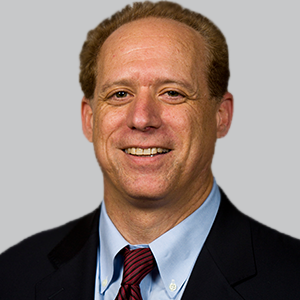Article
Essential Tremor Symptoms, Severity Improved With Cala Trio Neuromodulation Device
Author(s):
The wrist-worn wearable neuromodulation device for essential tremor was shown to be safe and efficacious in the PROSPECT trial, with more than 50% of patients experiencing a ≥50% improvement in tremor "power" or severity.
Stuart Isaacson, MD, director, Parkinsons Disease and Movement Disorders Center of Boca Raton

Stuart Isaacson, MD
Results of the landmark PROSPECT trial of the Cala Trio, a wrist-worn wearable neuromodulation device for essential tremor (ET), suggest that the device is safe and effective for the reduction of hand tremor in individuals with ET.1
PROSPECT, the largest trial ever conducted for ET, included 263 patients at 26 sites. Treatment with the device was associated with significant improvements in symptomatic relief at 3 months compared with baseline. These measures included both physician and patient ratings on The Essential Tremor Rating Assessment Scale (TETRAS) and the Bain & Findley Activities of Daily Living (ADLs) scale. All told, post-stimulation tremor ratings after 3 months of therapy were significantly better than baseline ratings (P <.0001).
“In the prospective PROSPECT trial, we found that 68% of patients showed significant improvement in hand tremor after wearing the Cala Therapy for three months, as measured by the ADL assessment scale,” said Stuart Isaacson, MD, director, Parkinson’s Disease and Movement Disorders Center of Boca Raton, in a statement. “For patients living with ET, this means that they can now more easily complete daily tasks such as handwriting, drinking from a glass, and using a soup spoon - tasks that were otherwise much more difficult.”
Developed by Cala Health, the Cala Trio is the only noninvasive individualized therapy for essential tremor available to patients in the US. “The therapy is calibrated to each patient’s hand tremor. When activated, it gently stimulates the nerves at the wrist, which interrupts the tremulous circuit in the brain and results in tremor reduction,” Isaacson explained in a statement.
Ultimately, the single-arm study instructed patients to utilize the device for 40-minute sessions, twice daily, over the 3-month study period, with each device calibrated for the patient using it. Each patient was assessed at 3 clinic visits. The average duration of essential tremor symptoms in the cohort was 25 years.
At month 3, 62% of patients improved from severe/moderate to mild-slight on the TETRAS scale and 68% of patients improved from severe/moderate on the ADLs scale, with an average symptom relief of 96.7 minutes (±12) after each session with the device. At visit 3, TETRAS scores improved from 12.6±0.2 points at visit 1 to 9.8±0.2 points (P <.0001), while ADLs scores improved from 18.4±0.3 to 15.8±0.3 in the same time frame (P <.0001).2
Additionally, there were significant reductions in tremor power or severity, as measured by motion sensor data from the device. In total, 92% of patients showed a median improvement, and 54% experienced ≥50% improvement in tremor power over the 3-month period. Clinician-rated TETRAS postural hold score correlated (r = .66; P <.0001) with the measurements from the devices’ accelerometer, suggesting its ability to offer an at-home surrogate measure for clinical tremor ratings. Across the study population, which included 21,806 sessions, mean sensor-measured tremor power decreased after each at-home therapy session compared to the pre-session value (P <.0001).
Notably, 68% of clinicians and 60% of patients rated improvement on scales of clinical and patient global impression of improvement at 3 months, with additional improvement reported in Quality of Life in Essential Tremor Questionnaire (QUEST) scores.
Transient device-related adverse events (AEs) such as wrist discomfort, skin irritation, or pain occurred in 18% of patients, with none requiring medical intervention.
Isaacson told NeurologyLive that the device’s ability to offer a clinically validated noninvasive neuromodulation therapy gives clinicians an option to help those individuals who have been left untreated or have poor tolerability with pharmacologic interventions. He advised that patients and their clinicians be notified that this is another option, “and one that may improve tremor without the systemic side effects.”
“It's an important advancement in the movement disorder world because essential tremor is so common—like 10 times or more common in Parkinson disease,” he explained. “These are patients who are really seen by general neurologists. It'll be important to try to get this information out not only to people who see a lot of movement disorders but to general neurologists, and indeed, primary doctors who are seeing a lot of these patients who may have been evaluated over the years and told there are no good treatment options, or tried 1 or 2 of the medications and had adverse effects and stopped them.”
The data were presented in a late-breaking poster presentation at the International Congress of Parkinson’s Disease and Movement Disorders, in Nice, France.
“We are thrilled with the results of the PROSPECT trial. It is tremendously exciting to see the relief our non-invasive neuromodulation therapy brings to patients with ET, without surgery or drugs,” said Kate Rosenbluth, founder and chief scientific officer at Cala Health. “We are deeply grateful to the patients and investigators who participated in this study.”
REFERENCES
1. Cala Health Announced Positive Topline Data from Landmark PROSPECT Study for Essential Tremor (ET) [press release]. Burlingame, CA: Cala Health; Published September 25, 2019. calahealth.reportablenews.com/pr/cala-health-announces-positive-topline-data-from-landmark-prospect-study-for-essential-tremor-etAccessed October 20, 2019.
2. Isaacson S, Peckham E, Waln O, et al. Non-Invasive, At-Home Use Neuromodulation Device Provides Symptomatic Relief from Essential Tremor: Results From The PROSPECT* Study. Presented at: International Congress of Parkinson’s Disease and Movement Disorders; September 22 to 26, 2019; Nice, France. cdn.filestackcontent.com/UK0rDf9lQXeqS8cUiBif. Accessed October 20, 2019.





